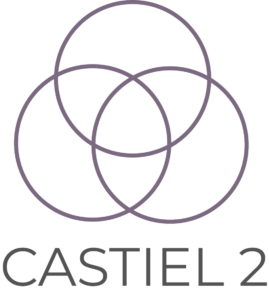HTMD, developed by the team of Prof. Gianni de Fabritiis at the Universitat Pompeu Fabra (ES), is a programmable environment to prepare, execute, visualize and analyse Molecular Dynamic simulations in HPC or HTC systems, including AWS. It is a Python-based programmable environment to perform system preparation and building, execution of simulations with different MD codes using adaptive sampling schemes and generate Markov State models to analyse simulations. The code is now maintained by Acellera; it is distributed commercially, but it remains free for academic users.
CoE: ComBioMed
CP2K is a quantum chemistry and solid state physics software package that can perform atomistic simulations of solid state, liquid, molecular, periodic, material, crystal, and biological systems. CP2K provides a general framework for different modeling methods such as DFT using the mixed Gaussian and plane waves approaches GPW and GAPW. Supported theory levels include DFTB, LDA, GGA, MP2, RPA, semi-empirical methods (AM1, PM3, PM6, RM1, MNDO), and classical force fields (AMBER, CHARMM). CP2K can do simulations of molecular dynamics, metadynamics, Monte Carlo, Ehrenfest dynamics, vibrational analysis, core level spectroscopy, energy minimization, and transition state optimization using NEB or dimer method. CP2K is written in Fortran 2008 and can be run efficiently in parallel using a combination of multi-threading, MPI, and CUDA. It is therefore easy to give the code a try, and to make modifications as needed.
The Binding Affinity Calculator (BAC), developed by the team of Prof Peter Coveney at University College London (UK), is a workflow tool that runs and analyses simulations designed to assess how well drugs bind to their target proteins and the impact of changes to those proteins. It is a collection of scripts which wrap around common molecular dynamics codes to facilitate free energy calculations. Use of ensemble simulations to robust, accurate and precise free energy computations from both alchemical and end-point analysis methodologies. BAC is a fairly complex tool to use, so at the moment the development team at UCL have made it available as part of consulting services or research collaborations. However, EnsembleMD provides user-friendly interfaces to related binding affinity calculation services, which will be made available as an App in the on-line store of associate partner DNAnexus; a beta version is being used by pharma.
CoE: ComBioMed
SIMULIA Living Heart Human Model is a high-fidelity multiphysics model of a healthy, 4-chamber adult human heart and proximal vasculature. The dynamic response of the Living Heart is governed by realistic electrical, structural, and fluid (blood) flow physics. With this model, medical professionals, researchers, and device manufacturers will be able to rapidly conduct virtual experiments in a highly realistic 3D environment. The Living Heart can readily be used to study cardiac defects or diseased states and explore treatment options by modifying its geometry, loading, or electromechanical properties. In addition, medical devices can be inserted into the model to study their influence on cardiac function, validate their efficacy, and predict their reliability under a wide range of operating conditions.
CoE: ComBioMed
InSilicoMRI provides a framework to predict the overheating of a medical device during an MRI scan. This software allows to evaluate the radiofrequency (RF) safety analysis of a passive device exposed to a 3T MRI birdcage coil field following the directives of ASTM F2182 standard. The simulation calculates the EM fields, SAR, and thermal heating after 900s of RF exposure. This application use Microsoft Azure cloud services to run the simulation.
CoE: ComBioMed
PolNet is a software tool for the computer simulation of blood flow in realistic microvascular networks imaged with a wide variety of microscopy and clinical imaging techniques. To date, PolNet has contributed to: a) uncovering the relationship between blood flow and blood vessel biology and its importance for correct vascularisation of tissues, and b) developing ways of predicting retinal vascular damage in diabetic retinopathy patients. PolNet facilitates the adoption of cutting-edge computer simulation technology by non-experts in the Biosciences.
CoE: ComBioMed
Palabos is Lattice Boltzmann Method (LBM) solver, available as open source, and massively parallel. The team of Prof Bastien Chopard at University of Geneva (CH) has specialised it to solve a number of relevant biomedical problems, including simulation of blood flow, and bone cement penetration during vertebroplasty. The software has specific features to deal with biomedical problems, reading medical images. Palabos was tested on CADMOS BlueGene/Q (Switzerland), UniGe Baobab (Switzerland).
CoE: ComBioMed
OpenBF is an open-source 1D blood flow solver based on MUSCL finite-volume numerical scheme, written in Julia and released under Apache 2.0 free software license. The software is developed by Alessandro Melis and Alberto Marzo at the Insigneo Institute at the university of Sheffield (UK). The solution is currently exposed as open source software; it is also installed on SURFsara’s HPC-Cloud, where it is used for large-scale sensitivity analysis and uncertainty quantification studies.
CoE: ComBioMed
HemoCell, developed by the team of Prof Alfons Hoekstra at the University of Amsterdam (NL), is a high-performance library to simulate the transport properties of dense cellular suspensions, such as blood. It contains validated material model for red blood cells and additional support for further cell types (white blood cells, platelets). The blood plasma is represented as a continuous fluid simulated with an open-source Lattice Boltzmann Method (LBM) solver. The cells are represented as Discrete Element Method (DEM) membranes coupled to the plasma flow through a tested in-house immersedboundary implementation. HemoCell is computationally capable of handling a large domain size with a high number of cells (> 10^4-10^6 cells). The code is currently installed and optimised for Cartesius, Lisa, and SuperMUC (Leibniz Supercomputing Centre system), and can be used by anyone with a valid account and CPU allocation on any of these systems.
CoE: ComBioMed
PMX is a service for users who need to do free energy calculations. Free energy calculations are extremely common in life sciences research. In molecular dynamics simulations, such as investigating how mutations affect protein function, these calculations provide insight into stability and affinity changes.
One important branch of free energy calculations involve alchemical transformations such as the mutation of amino acids, nucleic acids or ligand modifications. A challenging aspect of these calculations is the creation of associated structures and molecular topologies. pmx provides an automated framework for the introduction of amino acid mutations in proteins. Several state of the art force fields are supported that can be used in the GROMACS molecular dynamics package.
CoE: BioExcel

The website is operated as part of the CASTIEL 2 project. This project has received funding from the European High-Performance Computing Joint Undertaking (JU) under grant agreement No 101102047. The JU receives support from the European Union‘s Digital Europe Programme and Germany, Italy, Spain, France, Belgium, Austria, Estonia.

